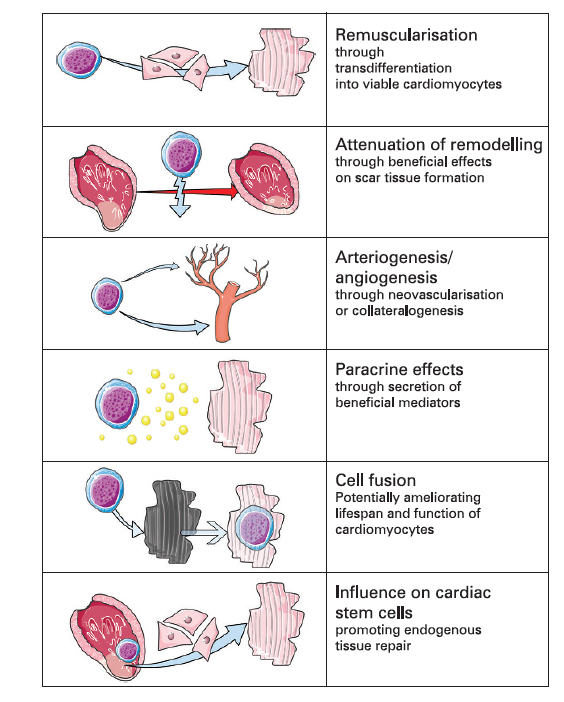
Stem cells in myocardial infarction
On Sale
$6.00
$6.00
Common Causes of Heart Attack
Heart attack is a serious medical emergency. You might be wonderingif you have had a heart attack, how you would feel and what would happen next? You might be thinking that you can go home and call an ambulance that will take you to the hospital and then it would be up to your doctors or specialists to help you regain your health. Some people however do not want to wait for an ambulance to come and they decide to make an appointment with their doctor right away. Let us explore some information on how you would go about treating a heart attack.
When you have a heart attack, the symptoms will be the same as any other heart disease symptom. However, there are some significant differences between the symptoms of a heart attack and those from other diseases. First, when you have a heart attack, the symptoms usually involve shortness of breath, palpitations and chest pain. You will also feel nausea and a general discomfort in your body. You may also feel dizzy and experience fatigue along with the other symptoms.
Endothelial progenitor cells
Since a heart attack happens when there is a sudden drop in the level of blood circulation, it is usually caused by something serious happening in your cardiovascular system. There are several factors that contribute to this situation. One of these factors is abnormal heart rhythms. When you have an abnormal heart rhythm, the rhythm becomes irregular heart beat will keep you from getting a normal blood pressure reading. This is called ventricular fibrillation.Once you have experienced the symptoms of a heart attack, the next thing that you need to do is to undergo a series of physical and mental tests. A physical exam will help the doctors to know the extent of damage that the heart muscle has undergone. During the exam, your heart muscles will be measured using various methods like the EKG (electrocardiograph) and MRI (magnetic resonance imaging). These tests will help the doctors to determine the severity of your problem.
Apart from the physical exam, a CT scan and an MRI will also be conducted without your permission. These tests will help the doctors to understand the cause of your heart attack. The use of different methods will help them decide on how best to treat your heart muscle. Sometimes, medication is prescribed without your doctor's permission because the medication that your doctor prescribed may have been ineffective without treatment.
Another important thing that you need to remember is to maintain proper blood supply to your heart muscles. This is important because in heart attacks, insufficient blood supply to the muscle causes it to deteriorate and become weaker. As a result, you will start feeling weak and might eventually faint. As a matter of fact, inadequate blood supply to the heart muscles is considered the root cause of death in sudden cardiac arrest.
The third most common cause of death in cardiac arrest is the spasm of the coronary artery. Coronary artery is a blood vessel that carries oxygen-rich blood to heart muscles. If the coronary artery becomes stiff or swollen, it can restrict the flow of oxygen-rich blood to heart muscles causing death. The spasm will eventually cause cardiac arrest. There are many factors that can cause the development of coronary spasm such as smoking, high cholesterol levels, high blood pressure, diabetes, or previous heart attack.
Angiogenesis/arteriogenesis
Another common reason for the development of heart attack is the damage to the heart muscle. This can be caused by aspirin or other nonsteroidal anti-inflammatory drugs. Aspirin causes a decrease in blood clotting ability, which will lead to increased blood loss and further damage to the heart muscle. This is why aspirin is not recommended for those who have ongoing blood thinning problems.HOW DOES STEM CELL THERAPY WORK?
The finding that cardiac derived cells are able to transdifferentiate into endothelial and vascular smooth muscle cells provides evidence for a stem cell induced amelioration of blood supply andmyocardial repair. There are two distinct mechanisms conceivable. First, angiogenesis that is characterised by proliferation of local microvessels leading to increased local distribution of blood
flow; and second, arteriogenesis characterised by an enlargement of pre-existing collaterals increasing
total flow to an ischaemic region.
Both mechanisms have been shown to occur after either administration of BM cells to the infarct area or recruitment of EP cells with a subsequent improvement in myocardial perfusion and left ventricular
function. However, reports of a direct contribution of stem cells to vascular growth have been challenged by findings that BM derived cells do not incorporate into growing vasculature but rather indirectly influence arteriogenesis by paracrine effects.
References
https://www.ahajournals.org/doi/full/10.1161/circresaha.117.311302
https://pubmed.ncbi.nlm.nih.gov/21498423/
https://stemcellthailand.org/therapies/heart-attack-myocardial-infarction/
https://www.atherosclerosis-journal.com/article/S0021-9150(14)00052-5/fulltext
